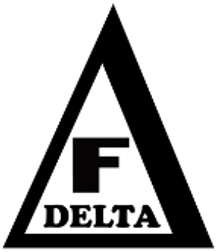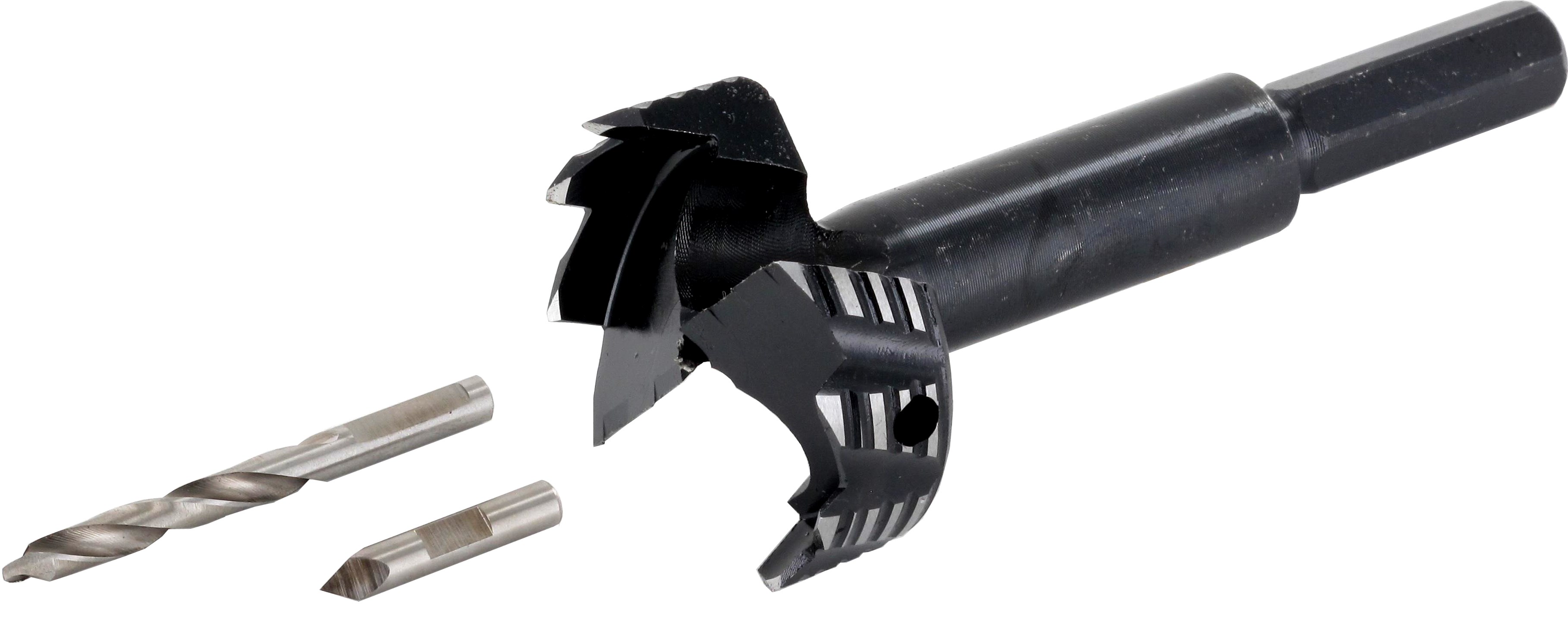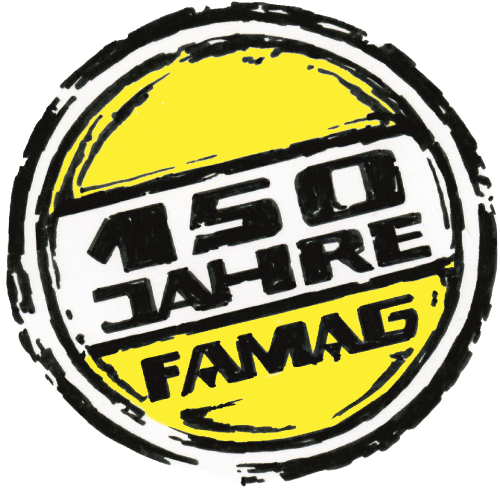Benjamin Forstner (25.3.1834, † 27.02.1897), born in Beaver County, Pennsylvania, was an American gunsmith, inventor and dealer of textile goods. His ingenious invention of the Forstner bit, which was patented on 22.9.1874, made him a rich man. His tool was designed in such a way that it was possible to drill freehand into soft wood at relatively slow speed.
In the age of hydroelectric power wheels, steam engines and transmissions, wood drills were increasingly used on stationary drilling machines. Thanks to clearly faster speeds than with the classic drilling winch, wood could suddenly be cut much quicker. The function of guiding the drill has been taken over by the stationary machine now. Since the circumferential cutting edges had contact with the material to be treated almost over the entire circumference, they heated up very strongly due to the high circumferential speed and the resulting friction energy. This often resulted in brand marks in the drill hole and a blue discolouration of the peripheral cutting edge.
A clever head reduced the length of the circumferential cutting edges and thus created a significantly larger chip space: The cylinder boring bit was born! In later days these tools were carbide tipped to achieve the longest possible service life in hard surfaces and materials. But all cylinder boring bits have one thing in common: They have obviously worse guidance characteristics than classic Forstner bit or the Bormax.
Nowadays the power drills and cordless drills are working with a substantial higher speed than in Benjamin Forstner’s day. The professional user is treating surfaces, which are much harder than in that time. Traditional Forstner drill bits with closed peripheral cutting edges, are overstressed and the results are very often blazing hot Forstner bits, which start to “smoke” during application
At this point, one could get the idea to use a carbide tipped cylinder boring bit. Generally the carbide assembly is ideal for treating hard surfaces, but cylinder boring bits have no or only poor guidance characteristics in freehand application, as they have no peripheral cutting edge. The drilling results will not be perfect. Completely different with the TCT-Bormax³! The positive guidance properties of the alloyed tool steel Bormax drill bits have proven themselves thousands of times and are highly appreciated by professionals. In the TCT-Bormax³ version the centre point, the taper taps and the main cutting edges are carbide tipped. The result is a cylinder boring bit with the perfect guidance characteristics of a Forstner bit and the really tough features of a cylinder boring bit. Unique in the combination of wear resistance and perfect guidance characteristics in freehand use.
The TCT-Bormax³ is high quality carbide tipped. For this purpose we mill plate seats on our modern CNC milling machines. Small tungsten carbide plates are used here and fixed with silver solder. These cutting edges are then sharply ground on CNC grinding machines. The TCT-Bormax³ has a carbide tipped centre point and two carbide tipped main cutting edges (from Ø 25 mm, below this diameter one main cutting edge only). It has one circumferential cutting edge. With a lot of effort we mill the seat of the taper taps into this peripheral cutting edge. In these grooves we position two carbide tipped taper taps (from Ø 24 mm, below this diameter these tools are fitted with one circumferential cutting edge and only one taper tap). This trick gives the Bormax³ its perfect guidance characteristics in freehand use, but maximum wear resistance at the same time. Its clever geometry distinguishes it significantly from traditional carbide tipped cylinder boring bits. These have no circumferential cutting edge, but only two taper taps and thus no guidance on the circumference in freehand application. In order to protect the Bormax³ from unwanted twisting in the drill chuck, we manufacture it with a hexagonal shank instead of cylindrical as before. This has proved to be particularly successful with the larger diameters and in extensions. We produce the Bormax³ from Ø 15 mm up to 60 mm in metric sizes and as well in “imperial sizes“ with an overall length of 90 mm. More than 30 individual sizes and different sets are available.
If you drill almost exclusively in soft wood and only occasionally in European hard wood, we recommend our alloyed tool steel Bormax product line 1622. But it is not suitable for everything that is really tough: The TCT-Bormax³ is a universal drill bit for all hard kinds of wood. For example you can drill without almost any effort in all common European, but also exotic hard woods, MDF boards, coated or uncoated chipboards and many plastic materials. In treatment it shows its teeth properly: In the pre-cut the two taper taps, which are integrated in the circumferential cutting edge, cut the wood fibres perfectly, so that you create an especially clean hole edge. After that it really starts. The two main cutting edges cut the solid wood or the board material almost effortless. Thanks to that clever geometry of the drill head, very low feed forces are required - compared to traditional tools – and even in hard wood the Bormax³ keeps cool. You will not experience any “smoking” or “burning”, not even when processing the hardest wood based materials. The same can be seen in many plastics and also in extremely hard plastics such as polycarbonate. You can use the Bormax³ in a drill press or freehand with a cordless drill. With today’s powerful battery-powered devices, even larger diameters of 40 mm and more can be produced perfectly freehand in hard wood. All Bormax³s have a hexagonal shank and so they fit perfectly into the machine chuck without twisting.

The TCT-Bormax³ is the only Bormax with a carbide tipping worldwide. Thanks to its clever geometry with the carbide tipped peripheral cutting edge, it is the only TCT Forstner drill bit with perfect guidance characteristics in freehand use. This universal application makes it the „all-rounder for all-rounders“. It is produced in Remscheid and therefore a real “Made in Germany“ tool. Due to its unique selling points it clearly belongs to the DELTA-F family of FAMAG.
- universally applicable in all hard woods and coated boards
- perfect freehand application – but also stationary – due to good guiding properties
- very efficient working as it can be used at high speeds
- the hexagonal shank avoids turning in the drill chuck
- still has the unique Bormax® geometry after regrinding
- can be perfectly extended with extensions
Overview of the most important details:
| Product line | 1663 |
|---|---|
| OØ | 35 mm |
| HØ | 12 mm |
| SØ | 10 mm |
| Overall Length | 90 mm |
| Effective Length | 57 mm |
| Material | TCT |
| Speed Ø 35 mm | 3.000 rpm |
| Packaging | Blister pack |
| PU | 1 |
The set of 5pcs including the Ø 15/20/25/30/35 surely is the best-seller. But also the set of 8pcs (Ø 15/20/25/30/35/40/45/50 mm) enjoys great popularity. In total we have 5 sets available with metric sizes.
If you want to drill particularly deep holes with the Bormax, we can offer extensions with total lengths of each 80/125/250 and 400 mm. These extensions can be used in any order combination. The Bormax can be extended by several extensions of the product line 1639.
If you want to produce a stud hole with a defined depth, the depth stop of the product line 1621 can be a perfect supplement. You insert the Bormax (with mounted centre point) into the guide bushing of the depth stop, adjust the drill depth and fix the tool with help of the enclosed allen key.
Bormax³ TCT Prima
If you like the idea of the exchangeable pilot drill on the Bormax® prima very much, but you are looking for the best wear properties of a TCT version, you should take a look at the new Bormax³ Prima product line (1664). With this Bormax version you can replace the centre point with a separate pilot drill. In this combination you are then able to make freehand inclined drillings in nearly all wood materials or to use the tool with inserted centre point as a TCT Bormax³.



